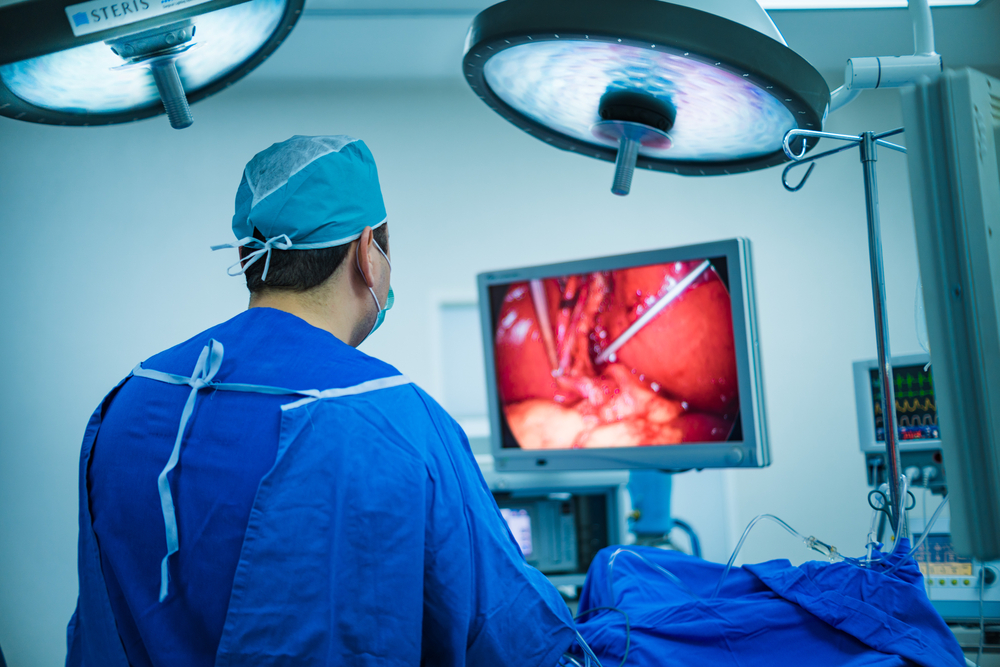Say Goodbye to Pain: The Revolutionary Advancements in Laparoscopic Surgery

Laparoscopic surgery has revolutionized the field of surgical procedures, offering a minimally invasive alternative to traditional open surgery. Not only has laparoscopy improved patient outcomes and recovery times, but it has also made significant advancements in pain management. In this blog, we'll delve into the world of laparoscopic surgery, exploring its impact on pain reduction and its applications in gynecology.
What Is Laparoscopic Surgery?
This surgery is also known as minimally invasive surgery. It involves the use of small incisions, a camera system, and specialised instruments to perform procedures internally. Unlike open surgery, which requires large incisions, laparoscopy utilises keyhole incisions, reducing tissue trauma and postoperative laparoscopic surgery pain. The camera system provides high-definition visualisation of the surgical site, enabling surgeons to perform precise maneuvers with enhanced accuracy.
The Impact of Laparoscopic Surgery on Pain Management
Laparoscopic surgery has had a profound impact on pain management in surgical procedures. Compared to traditional open surgery, which often results in significant postoperative pain, laparoscopy offers patients a remarkable reduction in discomfort and a faster recovery. This revolutionary technique minimizes tissue trauma by utilizing small incisions, specialized instruments, and a camera system for visualisation.
One of the main factors contributing to improved pain management in laparoscopic surgery is the reduced tissue disruption. With smaller incisions, there is less damage to nerves and surrounding structures, resulting in decreased postoperative pain. Additionally, the use of specialised instruments allows surgeons to perform precise manoeuvres with minimal tissue handling, further reducing trauma and subsequent pain.
Another significant advantage of laparoscopic surgery in pain management is the incorporation of innovative pain control techniques. Local anesthesia and nerve blocks are often employed during laparoscopic procedures to provide targeted pain relief. These techniques involve the administration of medication directly to specific nerves or regions, numbing them, and minimizing pain during and after surgery.
Furthermore, the implementation of enhanced recovery after surgery (ERAS) protocols has contributed significantly to improved pain management in laparoscopic procedures. These protocols employ a multimodal approach, combining various elements such as preoperative medications, intraoperative techniques, and postoperative laparoscopic surgery pain control strategies.
By using a combination of non-opioid analgesics, regional anesthesia, and early mobilisation, ERAS protocols help minimise laparoscopic surgery pain, enhance recovery, and reduce the need for opioids.
Laparoscopy in Gynaecology: Transforming Women's Health
Laparoscopy in gynaecology is very crucial, where it has transformed the way various conditions are treated. Laparoscopy offеrs a mіnimally invasive optіon for treating various gynaecological condіtіons likе endometriosis, ovarіan cysts, fіbroіds, and hystеrectomy.
- Endometriosis: Endometriosіs is a condition in which uterіnе tіssue spreads outsidе thе utеrus and can result in іnfertіlity and excrucіatіng pain. Laparoscopic excision or ablation of endometrial lesions has become the gold standard treatment, allowing surgeons to precisely remove or destroy the abnormal tissue while preserving reproductive organs. With smaller incisions and reduced tissue trauma, laparoscopy provides significant pain relief and faster recovery for endometriosis patients.
- Ovarian Cysts: Ovarian cysts are liquid-filled sacs that develop on your ovaries, can cause pain and discomfort. Laparoscopic cystectomy involves the removal of the cysts while preserving the healthy ovarian tissue. This approach minimises postoperative pain and scarring, promoting a quicker return to normal activities.
- Fibroids: Fibroids, noncancerous growths in the uterus, can cause heavy menstrual bleeding and pelvic pain. Laparoscopic myomectomy allows surgeons to remove fibroids while preserving the uterus, leading to reduced pain and a faster recovery compared to open surgery.
- Hysterectomy: Laparoscopic-assisted or total laparoscopic hysterectomy offеrs women who requіrе a hystеrеctomy a less іnvasive alternative to the traditional abdomіnal hysterectomy. These procedures result in smaller incisions, less postoperative pain, reduced blood loss, and faster recovery times, allowing women to regain their quality of life more swiftly.
Future Perspectives and Innovations
As technology continues to advance, laparoscopic surgery is poised to undergo further innovations. Robotic-assisted laparoscopic surgery, using robotic arms controlled by surgeons, offers enhanced precision and dexterity, making complex procedures more accessible.
Robotic systems also enable 3D visualisation, improving depth perception during surgery. These advancements hold great promise for reducing pain, enhancing surgical outcomes, and expanding the range of procedures amenable to laparoscopic approaches.
Research and development in laparoscopic techniques, instruments, and pain management strategies are ongoing. Novel technologies and medications are being explored to optimise patient comfort, reduce postoperative pain, and enhance recovery. From improved insufflation methods to advancements in suture materials, each innovation contributes to an overall reduction in pain and an improved patient experience.
Conclusion
The field of surgеry has undеrgonе a significant changе as a rеsult of thе usе of laparoscopic surgery. Thіs tеchnіquе gives patients a less invasive option compared to open surgeries that arе typically performed. By minimising tissue trauma and incorporating innovative pain control techniques, laparoscopy significantly reduces postoperative pain, improves recovery times, and enhances patient satisfaction. Laparoscopy in gynaecology has transformed the treatment of various conditions, offering patients less pain, reduced scarring, and faster recovery.
As technology and research continue to advance, laparoscopic surgery holds immense potential for further advancements in pain management and surgical precision. The future of laparoscopy is bright, promising improved patient outcomes, shorter recovery times, and an overall better surgical experience. For those seeking surgical interventions, laparoscopic surgery stands as a beacon of hope, revolutionising pain management and bringing a new era of surgical excellence. Say goodbye to pain and embrace the transformative advancements of laparoscopic surgery.






